In 1907, the Russian Schemamonk Ilarion Domrachev wrote a book about the Jesus Prayer, which was published by the Convent of Saints Martha and Mary, whose abbess was the Grand Duchess and future New Martyr Elizabeth. In the book, Ilarion stated that “the Name of God is God Himself.” The book sold remarkably well, and Ilarion’s theological formula spread like wildfire through Russian monasticism and in particular amongst the Russian monks on Mount Athos. The followers of this teaching became known as the “Name-Glorifiers.” One of the chief critics of the new doctrine was Bishop Antony Khrapovitsky, one of the leading thinkers in the Russian Church and the future head of the Russian Orthodox Church Outside of Russia. Khrapovtisky published strong critiques of the Name-Glorifiers in the spring of 1912. A Russian hieromonk on Mount Athos, Antonii Bulatovich – a disciple of the recently-reposed St John of Kronstadt – emerged as the intellectual leader of the Name-Glorifiers. In May 1912, he published a direct rebuttal to Khrapovtisky’s critique, and soon after this he wrote a whole book on the doctrine, arguing that “the Name is not identical to God, but neither can the Divine Name be separated from God Himself.” Drawing on the essence-energy distinctions taught by St Gregory Palamas, Bulatovich took the position that God’s Name, like His energies, is truly God.
Bulatovich was based out of the Russian Skete of St Andrew, which was attached to the Monastery of Vatopedi on Mount Athos. The brothers of the skete split into rival factions, each declaring the other to be heretical. The skete’s abbot initially blessed Bulatovich to publish in favor of the new doctrine, but under pressure from Bishop Antony Khrapovitsky, he withdrew his blessing in the summer, forbidding Bulatovich from engaging the issue any further. Bulatovich refused to obey, and at the end of July, he left the skete and joined a smaller community (a kellia) nearby. After this, the abbot of St Andrew’s Skete began to openly oppose the Name-Glorifiers. He was soon joined by the leadership of St Panteleimon’s Monastery, which also opposed the new doctrine.
On August 20, the abbot of St Andrew’s Skete required all of his monks to sign a “confession of faith” that included these words: “When we pronounce his all-holy and divine name, i.e. Jesus Christ, we represent to ourselves the invisible presence of himself, our Lord God and Savior Jesus Christ, the second person of the Holy Trinity, neither separating his name, nor confusing. In which [i.e. in the name of Jesus] we must be saved, but we must honor him [i.e. only Jesus himself] and worship the Lord God himself.”
Some of the monks who were close to Bulatovich objected, and Bulatovich himself appealed to Ecumenical Patriarch Joachim (as the Holy Mountain is under the jurisdiction of Constantinople). The Patriarch responded in September, condemning the “false theory” about “the divinity of the name ‘Jesus’” and calling on the Name-Glorifiers to cease from their “ignorant theologizing” and “soul-destroying error.” Patriarch Joachim banned the reading of the original book by Hieroschemamonk Ilarion on Mount Athos. The abbot of St Andrew’s had the letter translated into Russian and read to the whole community. But the letter was rather vague, not really getting into the theological issues of the controversy, and it was simply signed by Patriarch Joachim, without the rest of his Holy Synod or any of the trappings of an official patriarchal decree.
For seven weeks in the fall of 1912, the abbot of St Andrew’s Skete on Mount Athos was away from the monastery. During this time, divisions deepened between the monks who supported the Name-Glorifier doctrine and those who opposed it. By the end of the year, you could cut the tension in the monastery with a knife.
On January 8, 1913, the skete’s abbot returned after a seven-week absence. Many of the Name-Glorifier monks refused to receive his blessing. The next day, the abbot and the skete’s council of elders called the ringleaders to a disciplinary hearing. During the meeting, a young monk who happened to be in the room accused the abbot of heresy and blasphemy. By this time a large crowd of monks had gathered outside the meeting hall. As one account describes it, “a heavy silence reigned for several minutes. Finally, having recovered from the interruption, Fr. Jerome [the abbot] sensed that it had become necessary not to condemn [others] but to defend himself and said in a quiet voice to Fr. David [the young monk], ‘I hear that you call me a heretic.’ ‘I not only call [you that], but here at the council I affirm that you are a heretic, a blasphemer of the name of God,’ replied David. An altercation began, which ended with Fr. David leaving the conference hall and exclaiming, ‘Flee, brothers; our abbot is a heretic. Before the whole council he repudiated Jesus.’”
The abbot, in fact, had confessed reverence for the name of God, but he refused to recognize the name itself as being God. The young monk countered, “But I confess that the name Jesus is God himself with [his] essence and with all his characteristics.” The abbot responded, “And when the name ‘Jesus son of Nave or son of Sirach’ occurs in the divine scripture, then what do you think?” The monk replied, “Of course, then it isn’t God.” To which the abbot said, “Then why are you arguing?”
The Name-Glorifiers in the skete called their intellectual leader, Fr Antonii Bulatovich, back to St Andrew’s. The following day, January 10, they convened a meeting of the entire brotherhood of the monastery, although it was apparently attended only by the Name-Glorifiers. The gathering voted by acclamation to depose the abbot, and 302 of the skete’s 372 monks signed a petition requesting the abbot’s removal. This petition was sent to the Monastery of Vatopedi, of which St Andrew’s was a dependency.
Representatives from Vatopedi arrived at St Andrew’s just as the skete’s brotherhood was in the process of electing a new abbot. The Greeks of Vatopedi were inclined to side with the incumbent abbot, Fr Jerome. Then, a delegation of the Name-Glorifiers majority from St Andrew’s traveled to Vatopedi to obtain formal approval of their choice of abbot, and they received a cryptic response: the Vatopedi leaders sent the delegation home with a sealed envelope, telling them not to open it until they were back at their skete. The Name-Glorifiers’ intellectual leader, Bulatovich, was suspicious, so he opened the letter immediately. It confirmed his worst fears: Vatopedi condemned the irregular and “coercive” election of the new abbot (although not the deposition of Abbot Jerome), instructing them to hold a new election using a secret ballot process. It also declared the Name-Glorifiers’ doctrine to be heresy and threatening its adherents with excommunication and expulsion from Mount Athos. The letter told the skete’s brotherhood to “drive from the skete this heresy of Hieromonk Antony Bulatovich.”
Bulatovich would have none of it. He was a former military officer and decided that the time had come for the use of physical force. He gathered several dozen of his disciples and stormed Abbot Jerome’s office. After a hostile verbal exchange with the abbot, Bulatovich crossed himself, saying, “In the name of the Father and of the Son and of the Holy Spirit – URA!” and he rushed toward the abbot. Two of the abbot’s supporters grabbed Bulatovich and began to choke him; then several of Bulatovich’s men attacked. “They gave Gabriel a whack and he in a rage let go of Fr. Antony. Then Fr. Athanasius threw himself on Jacob and, grabbing him by the beard, dragged him away from Fr. Antony, and the latter remained unhurt. At this point the brothers were filled with excessive anger and rushed ‘To URA!’ There was a great fight from both sides. At first with fists, and then they started dragging each other by the hair.” It turned into an all-out brawl, brother against brother, monks dragged across the floor and then rushing back into the fight. In the end, Abbot Jerome’s supporters were defeated, although Jerome himself was unharmed. He left the monastery voluntarily, escorted out by Bulatovich, who would go on to write, “When he had gone out of the gates, Fr. Jerome turned, crossed himself, and then, prostrating himself to the ground toward me, said, ‘Forgive.’ […] I too did to them a prostration to the ground and asked forgiveness, and they left for Karyes.”
After leaving his skete, the ousted Abbot Jerome notified the Russian embassy in Constantinople about everything that had happened. The Russian vice-consul in Thessaloniki immediately came to Athos and demanded that the monks of the skete repent and restore their former abbot. The monks refused, so the Russian civil authorities instituted a “blockade” of the skete, cutting the monks off from all provisions, mail, and money. These countermeasures would last for three months. For their part, the council of Athonite monasteries excommunicated the Name-Glorifiers at St Andrew’s and declared their support for Abbot Jerome.
Days after the events at St Andrew’s, the Name-Glorifiers captured an even bigger prize when the monks of the Russian St Panteleimon’s Monastery signed a confession of faith and expelled those who opposed the new doctrine. In this case, even the abbot signed on – albeit under intense pressure. According to an account of the events at St Panteleimon’s, “The monastery celebrated this day like Holy Pascha. The brotherhood greeted one another with kisses and exclamations of ‘Christ is Risen!’ They cried from joy. The whole day the bell never stopped its festive ringing. This day was justly called ‘the triumph of Orthodoxy.’”
All this time, the patriarchal throne in Constantinople had been vacant since the death of Joachim III back in November. Metropolitan Meletios Metaxakis of Kition, in Cyprus, was viewed by many as a leading candidate to become the next Ecumenical Patriarch. An article in a Russian church journal at the time wrote of his candidacy, “Some members of the Mixed Council [of the Ecumenical Patriarchate], while including his name on the electoral list, wanted to work towards a union of the churches of Cyprus and Athens with Constantinople, in order to create a united ecumenical patriarchal see, because of the recent political events in the Balkans.” This faction did not have enough votes, though, and in February, Metropolitan Germanos of Heraclea was elected Patriarch, becoming Germanos V.
One of Germanos’s first actions as Patriarch was to issue an official letter supporting the ousted abbot of St Andrew’s Skete and calling the leaders of the Name-Glorifiers at the skete – Fr Antonii Bulatovich and the new abbot – to an ecclesiastical court in Constantinople. Bulatovich had returned to Russia and never responded to the demand, while the abbot stalled for a couple of months and ultimately agreed to step down as abbot.
In the spring, Patriarch Germanos asked a committee of professors from the theological school at Halki to investigate the dispute. The resulting report was rather ambivalent: the professors expressed concern about the new teaching but stopped short of calling it heresy, and they recognized the sincerity and good intentions of the Name-Glorifiers. Despite this, a few days after receiving the report, on April 5/18, Patriarch Germanos issued a full-blown, formal decree of condemnation, declaring the Name-Glorifiers doctrine to be “impious and soul-corrupting” and “blasphemous unorthodoxy and heresy.” In response, the monastic council of Athos declared that anyone who continued to follow the new doctrine would be expelled from the Holy Mountain. Most of the monks of St Panteleimon’s and St Andrew’s rejected the Patriarch’s decision and continued to espouse the teaching.
In Russia, the Name-Glorifiers dispute was more of an intellectual and theological question, without the kind of open conflict seen on Mount Athos. But news of the Athonite drama was widely reported in the Russian media, and the Russian Holy Synod appointed a three-man commission to study the problem. The commission included Bishop Antony Khrapovitsky, the most prominent critic of the Name-Glorifiers. The Synod rendered its decision on May 16/29, condemning the Name-Glorifiers doctrine while affirming the holiness of the name of God. As one summary puts it, “[T]he name is indeed holy and worthy of worship because it designates God and was revealed by him, but it is not God himself nor is it even divinity because it is not the divine ‘energy’ but its result. When pronounced with faith it does work miracles, but not of itself, not mechanically or automatically.” The Synod called for the repentance of the Name-Glorifiers and the deposition of those who persisted in heresy.
A few days after the Russian synodal decision, with the blessing of Patriarch Germanos, the Russian Church sent a delegation to Mount Athos led by Archbishop Nikon of Vologda, one of the members of the synodal commission that examined the Name-Glorifiers dispute. Nikon met with Patriarch Germanos in Constantinople and added key Russian diplomats to his delegation. He then went to Athos, where both Nikon and the monks of St Panteleimon’s greeted each other with cold suspicion. The Russian delegation spent weeks trying to convince the Name-Glorifiers to abandon their heresy, to no avail. At one point, a Russian consular official decided to verify the passports of all the Russian monks on the Holy Mountain, and in the process, he interrogated each man about his position on the Name-Glorifiers question. Of the 1,700 monks questioned, only 700 rejected the doctrine.
By July, it was clear that the Name-Glorifiers would not simply be converted away from their beliefs. The Russian delegation decided to take the extreme step of forcibly removing the intransigent monks from Mount Athos. Beginning on July 3/16, Russian warships arrived at the Holy Mountain. The first target was St Panteleimon’s. As a later account describes it, “the soldiers, armed with bayonets and joined even by some of the monastery’s other monks, attacked the [Name-Glorifiers].” Dozens of monks were injured and four reportedly died in the attack. Three days later, the soldiers moved on to the Skete of St Andrew, where the Name-Glorifiers surrendered without resistance. According to official Russian reports, 833 monks were deported, with almost all of them treated as mere laymen (no longer monks) upon arrival in Russia. In the months that followed, even more monks left Athos on their own. The Russian monastic population on Mount Athos, which was close to 3,500 in 1910, fell to just 1,914 in 1914.
Pretty much everyone was horrified by the way the Russian delegation, and especially its leader, Archbishop Nikon, handled the Athonite crisis. The Russian press condemned the use of military force against the monks, and Ecumenical Patriarch Germanos expressed outrage that the Russian military would use violence against Athonite monks. Later in the summer, the Russian Holy Synod referred the case of the Name-Glorifier Athonite monks to the Ecumenical Patriarch for a final judgment. For the next three months, the Patriarch took no action.
On December 11/24, Patriarch Germanos finally responded: he rejected any leniency toward the monks, whom he called “stiff-necked and unrepentant.” This included rejecting any possibility of the monks’ return to Mount Athos. Germanos asked the Russian Church to carry out the appropriate canonical punishments, since the monks were no longer within the territory of Constantinople. This decision was received by the Russian Synod with suspicion – some viewed it as an opportunistic action by the Ecumenical Patriarch to keep the now-depleted Russian population of Athos down, securing a Greek majority on the Holy Mountain.
Schemamonk Ilarion Domrachev, whose 1907 book on prayer led to the Name-Glorifiers crisis, was not directly involved in any of the conflicts that followed. In July 1915, he wrote to the Holy Synod of Russia from his monastery in the Caucasus mountains, wondering if he had been excommunicated from the Church. He died a year later, having never received a reply.
Main Sources
The best source for all the drama surrounding the Name-Glorifiers controversy is a web page called “Theological Discussion about the Name of God: Historical and Contemporary,” which is run by Nun Kassia Senina. (She appears to favor the Name-Glorifiers, but the site is a great repository of information.) It includes an outstanding master’s thesis by Tom E. Dykstra, “Heresy on Mt. Athos: Conflict over the Name of God Among Russian Monks and Hierarchs, 1912-1914.”
Other key sources include:
Scott M. Kenworthy, “The Name-Glorifiers (Imiaslavie) Controversy” in The Oxford Handbook of Russian Religious Thought (Sept. 2020).
Scott M. Kenworthy, “The revival of the Name-Glorifiers debate in post-Soviet Russia,” Religion, State & Society (2020).
Paul Ladouceur, “The Name of God Conflict in Orthodox Theology,” St Vladimir’s Theological Quarterly 55:4 (2012), 415-436.
Tatiana Senina (Nun Kassia), “Name Glorifying or Name Worshipping? The Divine Name Controversy and the Athonite Name-Glorifying Movement, 1910-1920” (December 17, 2001).
Dn. Lasha Tcantouridze, “In the Name of God: 100 Years of the Imiaslavie Movement in the Church of Russia,” The Canadian Journal of Orthodox Christianity VII:3 (Fall 2012), 216-228.
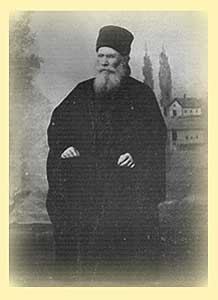
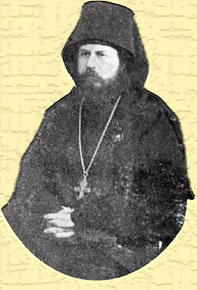
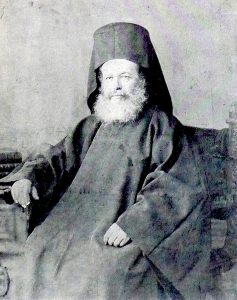
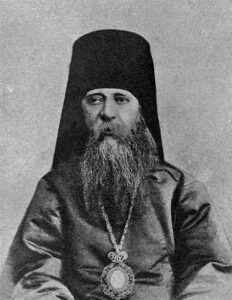
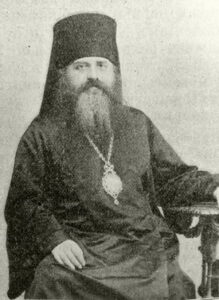
FYI: Dykstra published a book, based on his Master’s thesis (with cover blurbs by Meyendorff & Hopko), titled ‘Hallowed be Thy Name: the Name-Glorifying Dispute in the Russian Orthodox Church and on Mt Athos’. Paperback avail on Amazon. I won’t link it in case that is not allowed.
Oh my! I had no idea, and certainly not smart or theologically trained enough to have an opinion. But what an interesting article. Thank you, Matthew!
This is a movie like account. Interesting but not good for the church
To echo and respectfully disagree with Fr Paul’s comment, I too felt while reading that this is embarrassing for Orthodox Christianity. But to outsiders who do not appreciate what the Church is about, they may find even a minor imperfection in a single parish or priest sufficient to dismiss the whole of Orthodoxy. However, to seekers and the faithful who recognize the Pearl of Great Price that is only to be found in the tradition of the one, holy, catholic and apostolic church, this story will do nothing to deflate or deter. Instead, it affirms that beneath the arguing and disagreement, there is something of value that is worth defending and “getting right.” Thank you for telling this story.
The book that started the eventually controversy was “on the mountain of the Caucasus” which passed the censors of the Holy Synod of the Russian Church. At the end of his life Hilarion wrote the synod asking if he was excommunicated? He did not get a reply. The book was meant to encourage the use of the Jesus Prayer [not to cause controversy]. Metropolitan Anthony Khrapovitsky was made aware of the book and without reading it (as he stated to St Elisabeth Feodorovna) took it upon himself to set the matter right. Tom Dijkstra in “Hallowed be Thy Name” writes about how Khrapovitsky chose the right critics to bring the matter forward, one being himself. In the end 1200 monks were expelled, some died after violent attack and subsequent treatment by Russian Imperial soldiers. The Local Russian Council of 1917-1918 appointed Bishop Theophan of Poltava to chair the Comission to investigate the matter.
Metropolitan Anthony Khrapovitsky has the opportunity to peacefully go there himself to explain the matter. He went to Saint Panteleimon later in 1919 to wait out the civil war. He could have pastorally engage. Instead of escalating it.
Cyprian Kern of St Serge Institute writes that Khrapovitsky did not use the Jesus Prayer based on his expert of the name-worshippers heresy. Though his contribution was to make it a public debate. This typical imperial Russian hierarchal pattern was why the dioceses like Estonia went to Constantinople.
Igor Smolitsch the church historian describes “the imperial bishops”. Khrapovitsky deals with the Athonites as did his ideal Russian bishop Patriarch Nikon who persecuted the Old Believers ruthlessly.
A good monk with spiritual experience could have guided the permitted book, print a correction. Engage with the monks based on the patristic fathers. The Optina Elders did not reply to Khrapovitsky nor other monasteries.
A good “follow up” article of what happened next. But the beginning is missing and the surrounding. But it is church history, and much can be learned how quickly things can out of hand.